Cocktail Audio X30 - £999
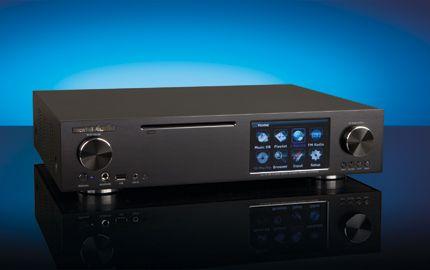
Music centres combining record deck, cassette recorder and tuner were big business back in the late seventies through to the early eighties, with fans keen to enjoy music at home on all the main analogue formats of the day. Today in the mostly digital era the idea of the ‘one box does it all’ approach goes against serious audiophile thinking, with the general consensus being that dedicated components being assigned to specific tasks is the best way to guarantee pure, interference-free playback of your music collection.
With the world of audio moving towards streaming and downloads, we’re told that the desire for physical digital media (CDs) is falling rapidly. So, what to do with that sizeable CD collection and how best to migrate to streaming are regular questions being asked by music fans looking to move with the times to a less tangible music playback system. Enter Cocktail Audio’s X30...
The X30 is probably best described as a ‘music hub’ and brings together CD ripper, HD music server, network streaming, internet radio, FM radio receiver and amplification duties in a single hi-fi separates-sized box – a modern day version of the seventies music centre, if you like. However, unlike the X10 – its half-sized older sibling (reviewed, HFC 353) – the X30 is a full-size unit that measures a fairly standard 435mm wide. Nevertheless it is a remarkably compact and well-formed unit that is considerably less bulky than you might imagine given all the duties it performs. Available in a choice of black or silver finishes, it feels rather nicely put together and sports a well finished 8mm-thick aluminium front panel. There is a minimal amount of controls on the front face except for two rotary dials – one at either end – and four buttons for basic operation, meaning you can at least control the system without the need to use the remote. A disc-loading slot and a 5in screen are pretty much all that remain to catch the eye.
At first glance the LCD panel looks as though it is touch sensitive, and I instinctively go to prod one of the colourful icons to begin navigating the system. I’m not alone here and several family members attempt to operate the X30 in the same manner, but like me they quickly discover that finding your way around the X30’s menu is performed using the rotary control and four buttons beneath to scroll through the system options.
There is a large remote control supplied, but it is festooned with buttons and has a somewhat illogical layout that takes some familiarisation and an occasional thumb through the manual to get to grips with the numerous facilities before operation can become anything like second nature. Alternatively you can dispense with the cumbersome remote and front-panel screen by using one of the downloadable apps that’s freely available for tablet and smartphone devices to link the X30 to your networked music. Cocktail Audio recommends using Eyecon for Android and Kinsky for iOS devices. I also try Sitecom, which is just as easy to install and operate, and instantly sees my networked music for streaming as well as the contents of the ripped CDs in the X30’s music library. None of the apps are able to control the internal amplifier volume level, but Cocktail Audio says that a dedicated app offering full control of the X30 is planned in the future along with the inclusion of streaming services like Spotify.
Front panel connections run to a 6.35mm headphone jack, USB port and 3.5mm stereo input jack. Around the back you’ll find a RCA input and output, optical and coaxial digital inputs, and optical, coaxial and balanced AES/EBU XLR digital output connections – allowing users to upgrade the signal path to an external DAC or amplifier should they wish. Ethernet for wired network connectivity and two USB ports for memory stick or a wireless dongle – available as an optional extra – are also on hand. There’s no USB type-B input to link direct from your laptop, unlike on the X10 – see Q&A overleaf. Additionally there is an HDMI output to display menus on a TV screen, as well as an antenna input for FM radio reception while a pair of binding posts allow the X30 to drive a pair of speakers via the internal amplifier.
HDD storage options range from 500GB up to a considerable 4TB, and a customised draw at the back provides an easy expansion slot with support for 2.5in and 3.5in SATA HDDs or 2.5in SSDs – solid state drives – offering silent operation for those audiophiles that are put off by the X30’s low-level cooling fan whirr. It’s not a particularly intrusive noise, but it is good to have the option of a silent drive, and helps to bolster its hi-fi credentials.
The X30 version supplied for this test comes fitted with a 2TB HDD, which Cocktail Audio says is enough space to accommodate 5,200 CDs ripped in FLAC or up to 12,000 CDs ripped in MP3 format at 320kbps quality. A greater number of discs can be stored with increased compression levels, but I wouldn’t recommend going below 320kbps when ripping in MP3 quality.
Setting up the X30 is simple. I find the front panel controls and menu prompts to be intuitive enough to get through the initial installation and rip a selection of CDs without the help of the extensive instruction manual, and only require the remote control for its alphanumeric buttons when it comes to inputting the password to enable access to my home network.
The first icon on the left of the front panel display is Music DB, which contains the music library of ripped CDs contained on the hard drive. Pop a CD into the slot-loading mechanism and scroll to select the CD Play/Rip icon. With the track names on the screen sourced from the X30’s internal database, hit the menu button and select whether to rip all or only selected tracks. Discs can be ripped as WAV, FLAC, OGG or MP3 and are preset as the Audio Rip Format in the Setup menu.
Despite an overwhelming desire to transfer my entire CD collection onto the X30, I don’t have the days to spare that are necessary for such a massive undertaking. Not that it is anything less than an easy and speedy process – with the discs ripped for this test taking under five minutes each. CD artwork can be quickly downloaded too, and there are several alternative links to album cover databases should the correct artwork not be found in the first search.
Sound quality
There’s something rather satisfying about having a handful of discs loaded and organised in one central location. It’s almost a cathartic process going through the routine of ripping CD tracks, and the quality of the home-stored versions shows very promising results indeed.
With a pair of JBL Studio 270 floorstanders connected to the amplifier’s speaker outputs there’s barely any discernible difference between playback of the original CDs and the WAV or FLAC-ripped versions stored on the HDD. Music comes across in an effortless way, and the claimed 50W amplifier into 8ohms drives a pair of JBL floorstanders with surprising ease. The X30 perhaps doesn’t have the strongest grip at the floorstander’s bottom end, and a more powerful amp may help to tighten the slightly uncontrolled bass at higher volume levels, but it’s an enjoyable performance all the same.
Hanz Zimmer’s Like a Dog Chasing Cars is handled with remarkable dexterity, filling my medium-sized listening room with an enjoyable energy even if it’s not the last word in vice-like grip with this particular speaker partnership. Volume levels are respectable and push a decent amount of energy into the room, and it’s only as I crank the volume control up towards its upper limit that things begin to get uncomfortable with a more noticeable lack of control.
Trying out a MP3 recording at 320kbps immediately shows itself to be of noticeably inferior quality in audio terms with some considerable graininess on a rip of Radiohead’s Exit Music (For Film) demonstrating a lack of definition and a lesser sense of the track’s haunting sweep.
Radio quality is respectable over FM and the built-in tuner has decent sensitivity. Streamed radio broadcasts do a respectable job with the format, and the X30 manages to successfully mask the low data rates. A record facility places both FM and internet radio recordings in a folder on the HDD for playback later. There’s no discernible degradation in audio quality terms, and timer recordings can be made of your favourite radio programmes too.
A 10-band graphic equaliser is provided should you feel the desire to tailor the X30’s tonal output or compensate for any speaker or room deficiencies. There is even a handful of preset EQ settings to choose from – most of which sound truly ghastly.
The headphone jack on the front panel is a little on the noisy side, with some low-level background hum when hooking up a pair of headphones. It’s a slight glitch in the X30’s otherwise smoothly performing package, and headphone listeners should consider adding a dedicated amp for solo listening.
Conclusion
The X30 is a flexible one-box solution. There are some operational glitches and idiosyncrasies that will no doubt be tackled in later firmware updates, and a dedicated remote interface is planned for iDevices. It plays hi-res music files up to 24/192kHz from a network and has plentiful storage options, making the X30 one of the most versatile hubs around.
LIKE: Capacious storage options; flexibility; musically engaging
DISLIKE: Clunky interface; poor remote; needs time to master
WE SAY: Impressive storage, ripping and networking, but let down by interface
DETAILS
PRODUCT Cocktail Audio X30
ORIGIN Korea
TYPE 2TB music server system
WEIGHT 5kg
DIMENSIONS (WxHxD) 435 x 99 x 325mm
FEATURES
• Storage: 2TB (256GB, 500GB, 1TB, 4TB options)
• Formats: FLAC, MP3, WAV, OGG
• Display: 5in TFT LCD panel
• 50W quoted power output
DISTRIBUTOR Sygnifi Ltd
TELEPHONE 01732 765157
WEBSITE sygnifi.co.uk
 |
Inside this month's issue: Arcam Radia A25 integrated amp, iFi Audio iDSD Diablo 2 DAC/headphone amp, Eversolo DMP-A8 streamer/DAC/preamp, Line Magnetic LM-845IA valve amp, Record Store Day Spring Drop, standmount loudspeaker Group Test and much, much more
|



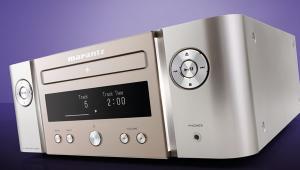
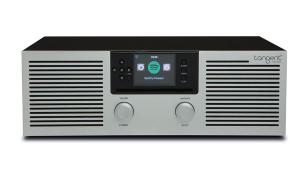



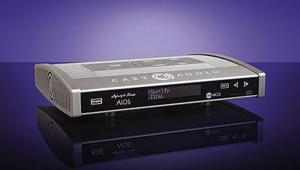
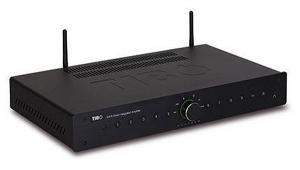

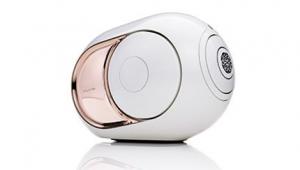
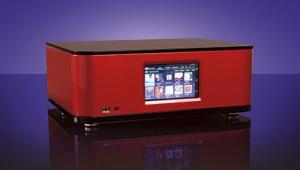

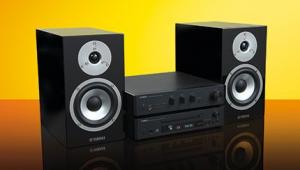
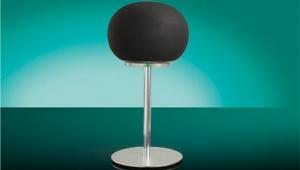






























.jpg)



